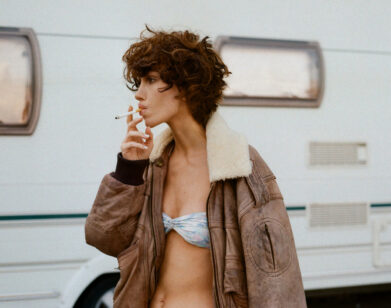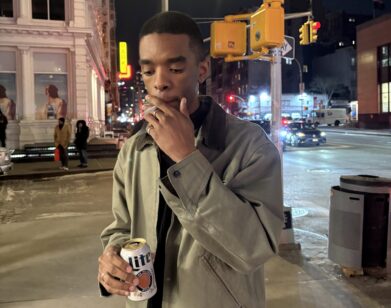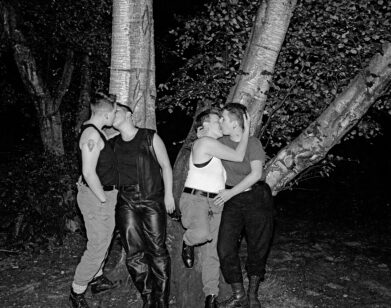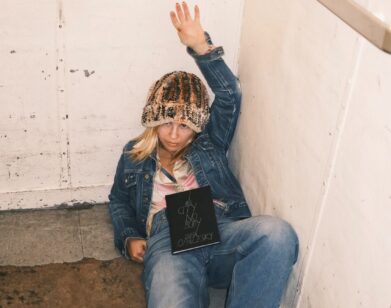The Man Behind Richard Avedon
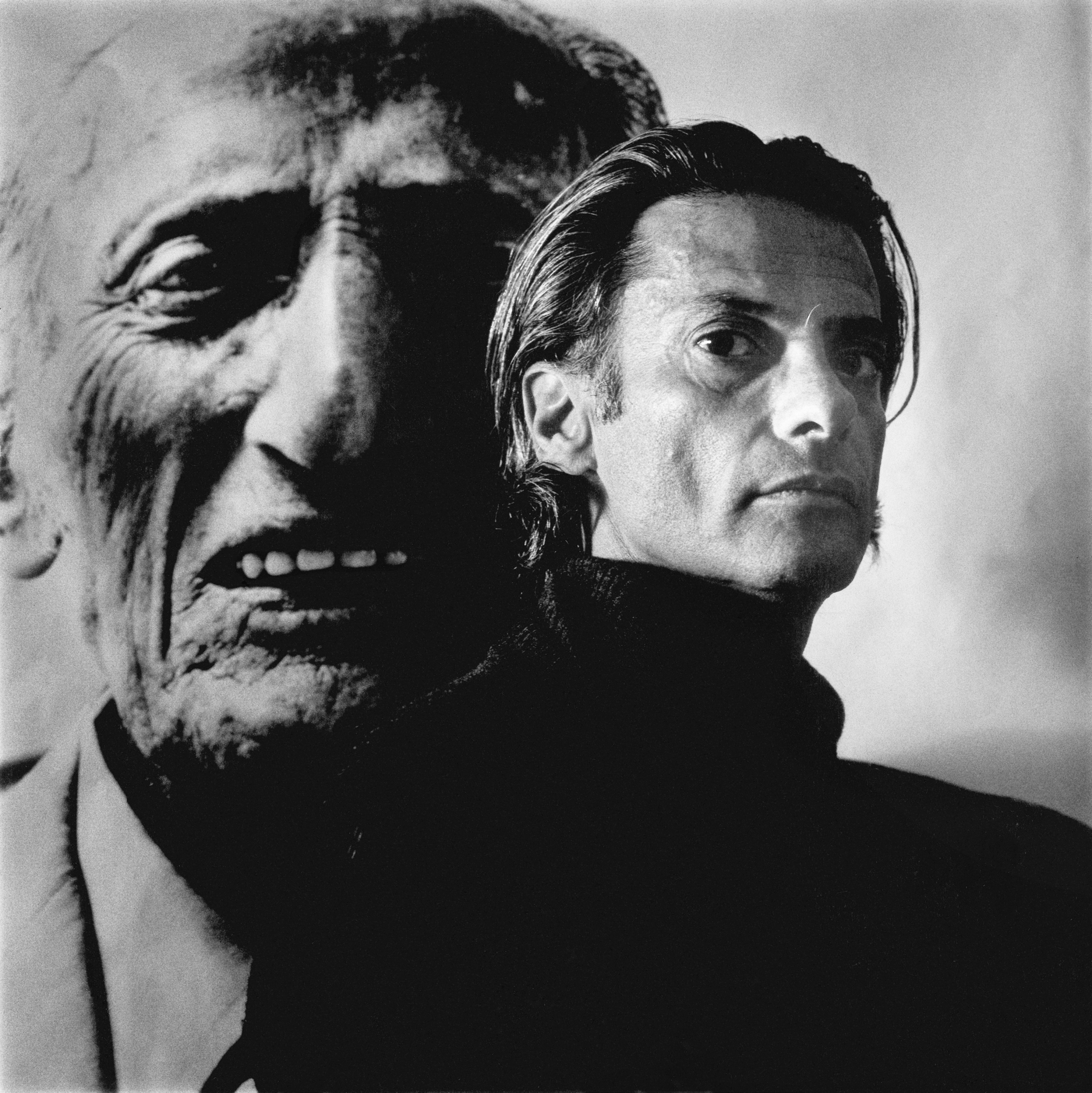
Richard Avedon with a portrait of his father, 1974.
“When Dick walks into a room, with his hair like Einstein’s, and plays with his glasses, a lot of people are intimidated,” Brooke Shields said of the photographer Richard Avedon in the May 1992 issue of this magazine. “But when he works, he’s so acutely creative, so sensitive. There is a mutual vulnerability, and a moment of fusion when he clicks the shutter. You either get it or you don’t.” This behind the lens fusion is precisely what Gideon Lewin, Avedon’s assistant of sixteen years, reveals in a new monograph, Avedon: Behind the Scenes 1964-1980. It follows Lewin as he travels with Avedon to Paris for Fashion Week, to Japan for Vogue shoots, and into the personal and professional life of the man behind some of the 20th century’s most enduring portraits. At once a dazzling retrospective and a profound meditation on Avedon’s inner life, Lewin’s book showcases the singular vision of the prolific photographer, while also highlighting the vast network of assistants, designers, artists, and technicians that helped make his vision a reality. To learn more, Interview traveled to Lewin’s studio, who, along with the designer and longtime friend Joanna Mastroianni, walked us through some of his favorite images in the book.
———
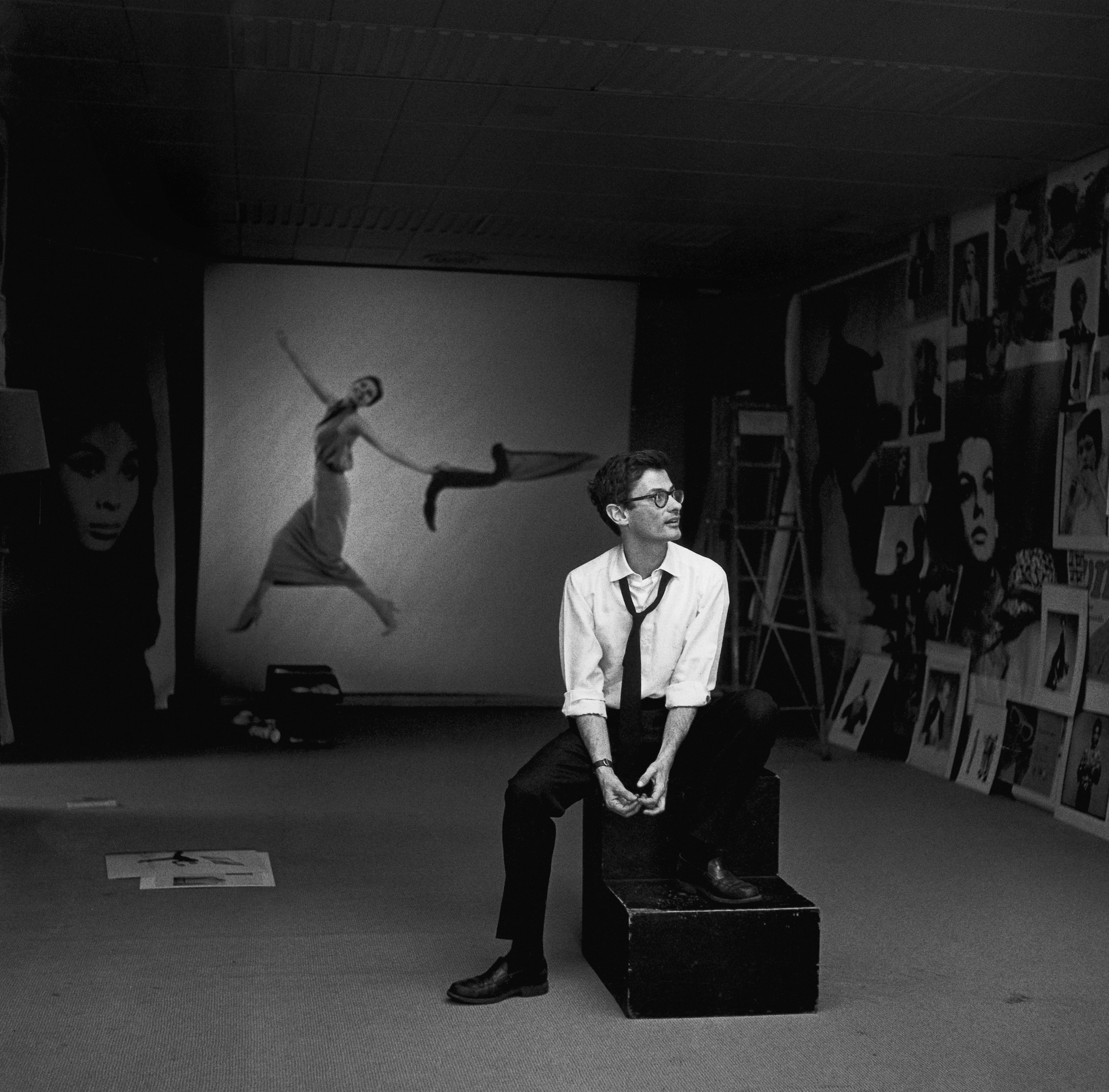
Avedon with collage, 1965.
GIDEON LEWIN: This was an exhibition created for the Smithsonian in 1962, and he replicated it for McCann Erickson in 1965. It was a collage of all his work from 1945 to 1964. It’s a mixture, as I say, of beauty and the beast. He had the most beautiful and the most insane people. Jean Shrimpton and Twiggy… and you had insane asylum pictures and you have a poster of the Kennedy assassination, Elizabeth Taylor, Ezra Pound… It was quite a feat to put it all together. Everything had to be done right—the prints, re-touching, resizing. We had just finished hanging everything, and he was just sitting, looking around at it. I always had my camera on me at the time, so I said, “Let me do a portrait of you.” And he said, “Okay, okay, go ahead.”
JOANNA MASTROIANNI: What I love about this is you’re looking at a young Avedon who’s almost in awe of his own work, like he’s never seen it before.
———
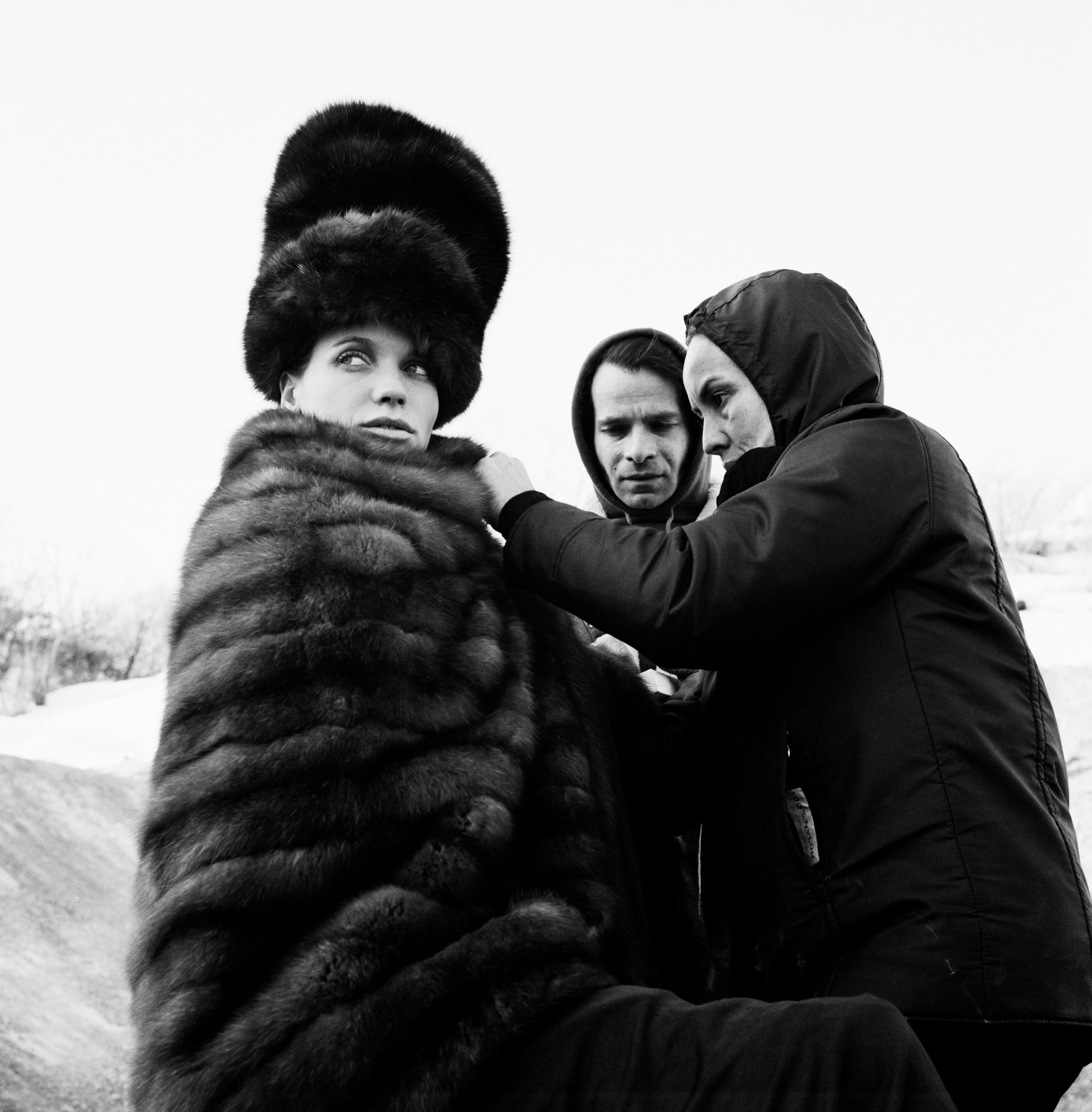
Veruschka being styled, Hokkaido, 1966.
MASTROIANNI: This one here is also quite charming. This is in 1966, in Japan. This was for the October issue of Vogue. In those days, Vogue was coming out every two weeks.
LEWIN: What’s marvelous is that everybody went, first class, on Air France. Veruschka in a photo shoot didn’t happen at the last moment. She was the It Girl of those days.
MASTROIANNI: And she also has a size 13 foot. They had to plan in advance so they could have custom-made shoes and boots to complete the look.
LEWIN: The furs were especially long because she was 6’2″.
———
PLUS: AVEDON, EXPOSED: ANDY WARHOL’S FACTORY MEMBERS REMEMBER THE RADICAL LEGACY OF A PHOTOGRAPHIC ICON
———
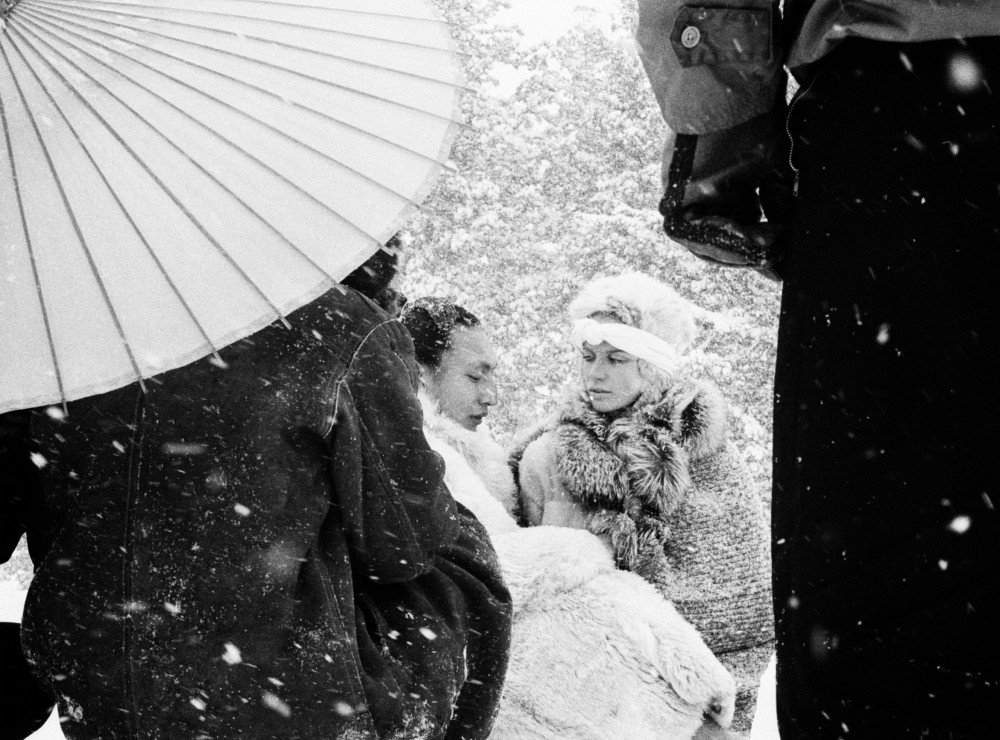
Veruschka and sumo, Yuzawa, 1966.
LEWIN: Most of Avedon’s editorials working outside the studio were usually life stories, which would include a man and a woman, and they go places and do things, and so on. He needed a tall person for Veruschka. We went to a sumo stable for lunch, and we watched and chose. We found somebody who was really tall—he was taller than anybody else, so he was easy to spot. They agreed to release him to us for the photo shoot. No liquor, no cigarettes—those were the conditions to release him. Of course, the minute he stepped out of the stable, he asked for a cigarette. We gave him one, and he took one puff and the cigarette was gone. We were also chasing snow, because wherever we came the snow was just melted.
MASTROIANNI: They had to keep on moving around. There’s no backdrops—this is real snow.
———
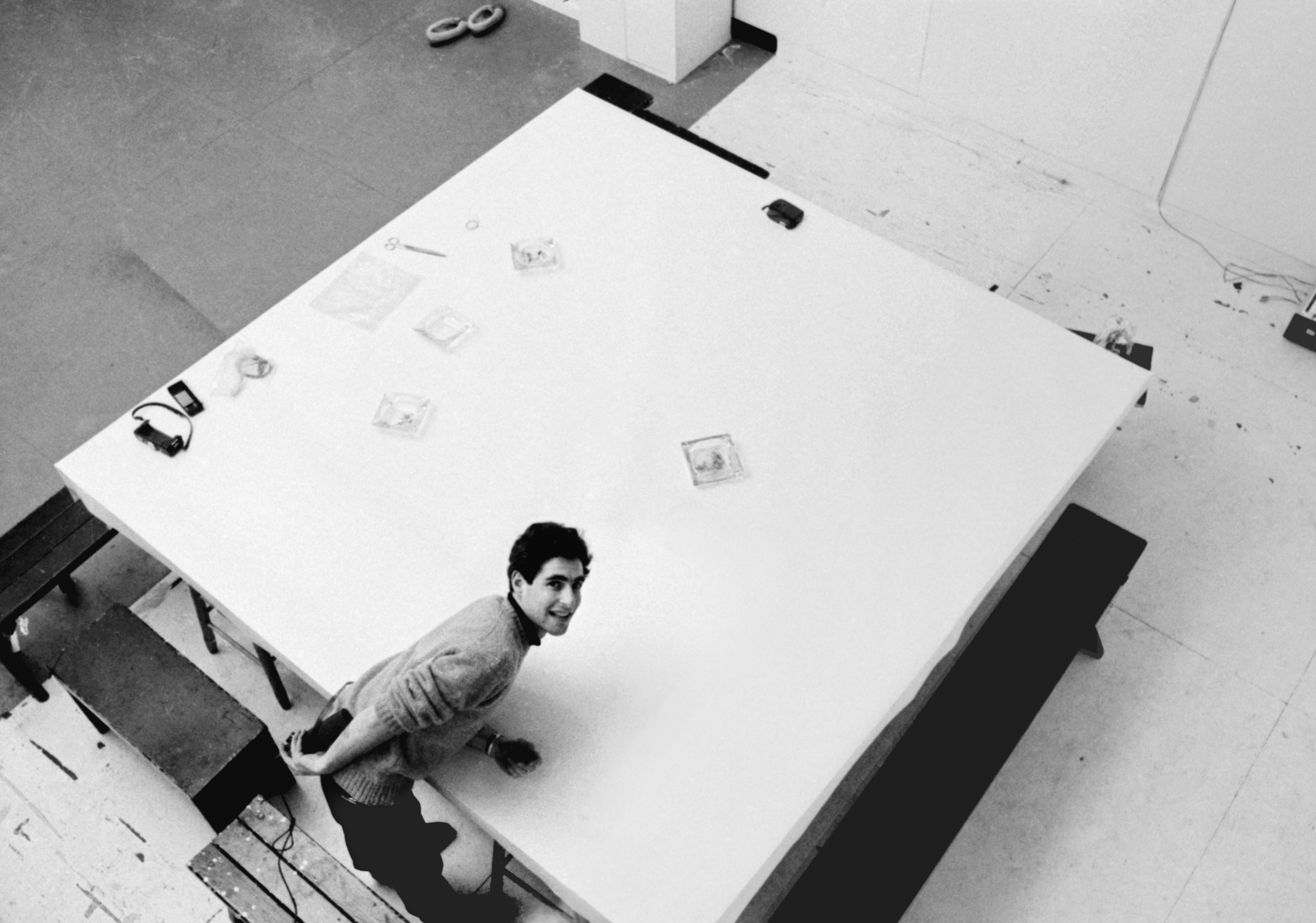
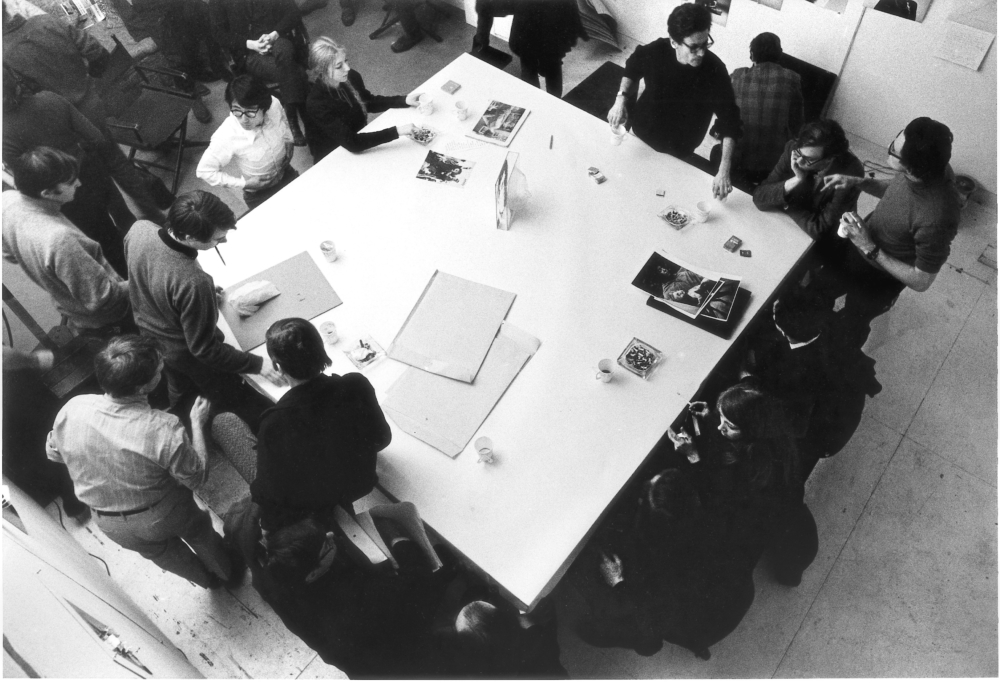
The Master Class, 1967. Top: Gideon testing his camera on the ceiling. Bottom: Handing in the assignments.
LEWIN: Avedon created a master class. He invited young and upcoming photographers, gave them a project to go out and photograph, and then they would meet back in the studio and put it up on the wall and discuss it. He had Diane Arbus, Lucas Samaras, Marvin Israel, and so on.
MASTROIANNI: Gideon wasn’t allowed to participate in that he could go out to take photographs—his project was to document all this. He put the camera on the ceiling to make sure they were going to work.
LEWIN: When we were in Japan, we got the first remote-controlled Nikons, so I put cameras in the ceiling.
MASTROIANNI: What’s wonderful is the intensity—they were like really into this. Of course, everybody chain smoked. It was really marvelous to see because they were so passionate about photography and empowering young photographers.
———
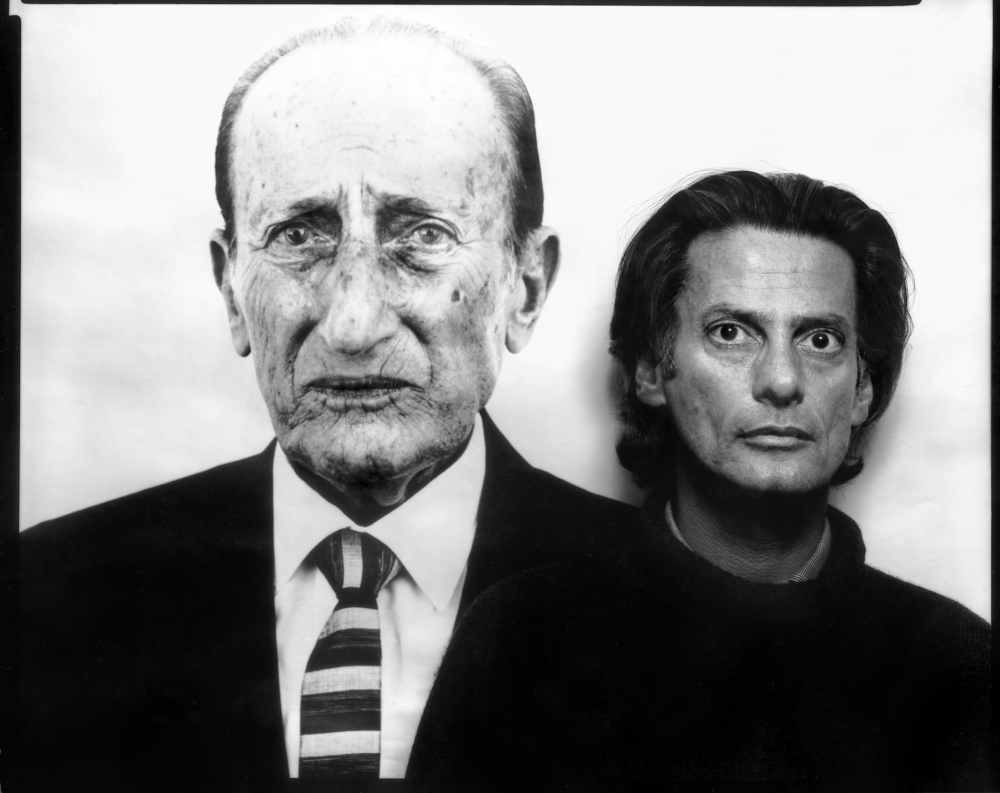
Richard Avedon with a portrait of his father, Jacob Israel Avedon.
LEWIN: Towards the end of Avedon’s father’s life, Avedon decided to make peace with him. They had a very complicated relationship. So as his father was dying of cancer, he decided he wanted to capture his dying father. That’s what we’re looking at here. It became an exhibition at the MoMA. It was my idea to photograph him. His father was dead already, so I couldn’t do them together. I said, “Let me photograph you in front of your photograph of your father,” and he said, “Brilliant.” We spent two days photographing. They never really made peace. It’s interesting, his eyes were almost like Picasso. Penetrating.

